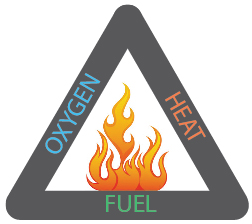|
Category:
Cooling Tower
It’s a valid question and one that Brentwood is quite capable of answering as we produce both Polyvinyl Chloride and Polypropylene film fills. For a much more in-depth look at the chemistry differences between these two polymers you can reference CTI paper TP15-21. This post will keep the discussion at an overview level of the differences.
The first thing to note is that Polypropylene (PP) film fills can be used for higher temperature applications than the same fill product made from Polyvinyl Chloride (PVC). This is purely due to the material properties and their corresponding heat deflection temperatures. For a counterflow application, a PVC film fill is recommended to operate at or under 140°F (with the possibility of handling short term temperature excursions that are higher), whereas, for a counterflow application, a PP film fill is recommended to operate at or under 175°F (with the possibility of handling short term temperature excursions that are higher). This allows PP to be used for applications that will see much higher water temps. See the chart below for more reference.


One aspect that does not get a lot of mention, probably because it gets a little more complicated, is the surface energy difference between PVC and PP products. From CTI paper TP00-01 published by Rich Aull and Tim Krell, we find that “the natural surface of any polymer is by nature hydrophobic, that is water tends to bead-up and resists forming a smooth and uniform water film. With inadequate water film development, the expected performance of the fill will not be achieved and performance will suffer. While in service, the fill’s surface becomes less hydrophobic and over time the surface becomes fully conditioned (aged) allowing water to form a thin film.” PVC has a much lower surface energy and ages faster than PP, which has a surface characteristic that closely resembles that of a non-stick cooking pan. “Polypropylene has a more ‘waxy’ surface and is very difficult to age. After three weeks in the aging facility the low water loading characteristic curve is still not fully developed…The conclusion is that polypropylene fills will not achieve their full performance potential for 2-3 times that of PVC and may never at the lower water rates.” This may be a critical point when certified thermal performance testing is required for a new cooling tower or retrofit. Not understanding this difference in material properties has the potential for costing the installing contractor and owner substantial money.
Lastly, we will take a look at the fire risk potential between PVC and PP. To get a basic understanding of “fire” is to understand the combustion process. Keeping at a high level for this article, fire is a 3-legged process as seen in the following diagram. The combustion process needs the proper mix of fuel, oxygen and heat in order to happen.


In general, PP is much more flammable than PVC. PVC is inherently a self-extinguishing fire retardant material due to the abundance of chlorine in its formulation, with burning characteristics closer to that of paper, wood and straw. In contrast, PP can more closely be viewed as a solid hydrocarbon fuel and is very combustible, with burning characteristics closer to jet fuel and gasoline, as can be seen in the test results shown below.
A very straightforward visual representation of this can be seen in the graph below that shows results of many Limiting Oxygen Index (LOI) tests for both products (ASTM test D2863). What the LOI test provides us is a repeatable and precise number that shows the likelihood of a material catching fire and its ability to sustain that fire. With normal atmospheric air (at sea level) comprised of 21% oxygen, the higher the material LOI number is above 21% the more fire resistant the material is. Notice how all of the PP materials, including those listed with Fire Retardant (FR) additives, are very close or below the 21% line. These materials have a very high risk of igniting and will maintain the fire. Now note the second black line on the graph, which is positioned at 27%. This line indicates the oxygen concentration generally recognized in the plastics industry as the point where a material will generally demonstrate fire retardant characteristics in a real-world application. That is, anything with LOI below 27%, while better than those materials with LOI numbers below 21%, is still readily susceptible to catching fire and sustaining the fire. Materials with LOI numbers higher than 27% are materials that definitely start to show a resistance to igniting and sustaining a flame. The higher above 27% the more fire retardant the material becomes and the harder the material is to ignite. Note that all of the PVC samples fall well above 27 with the lowest being 38 for European PVC, containing higher levels of combustible plasticizers. Again, this is due to the inherent nature of PVC and its self-extinguishing characteristic due to the chlorine in the material.


In summary, there are distinct differences between PVC and PP. It’s up to an engineer or owner to determine what is required for their fill material. If it’s a high temperature application then PP might be a consideration if an HPVC product can’t meet the need, yet that performance should be weighed against the fact that PP may not ever become fully aged and perform as predicted and is a material that catches fire more readily and burns fast and hot like jet fuel. There’s rarely, if ever, one solution for all applications. It’s important to understand all of the risks and benefits of different fill designs and material formulations. One must consider and weigh the selection parameters, like thermal performance and initial cost, but also should include the material characteristics as well as the total cost and risk potential in order to evaluate the best fill choice for any given application.

